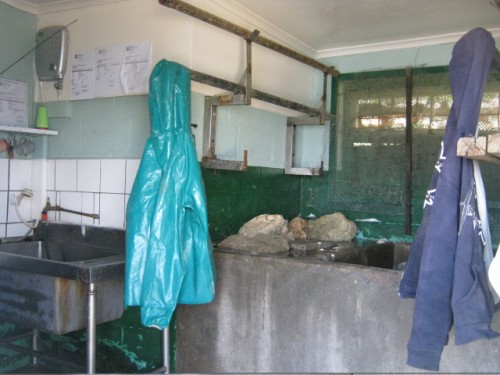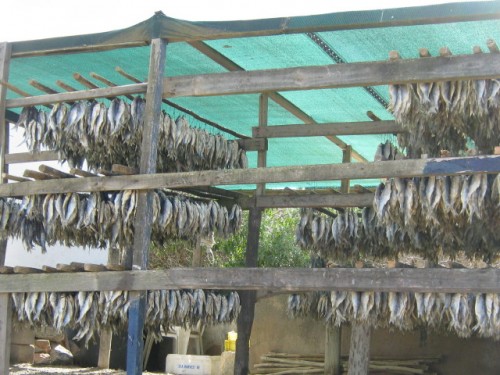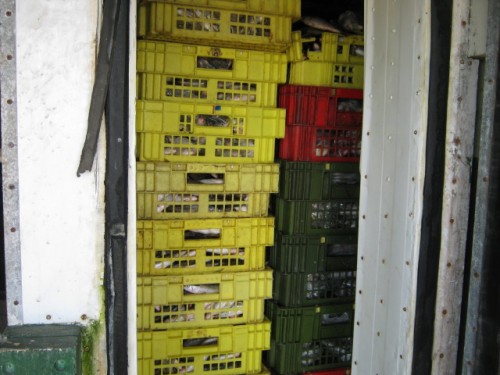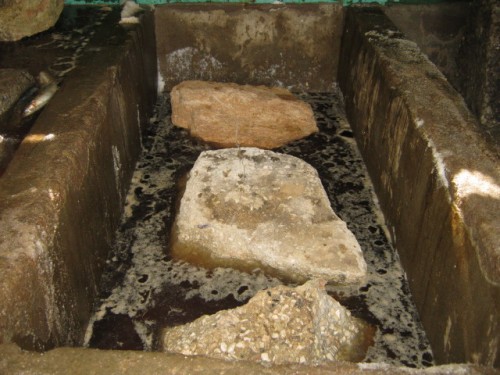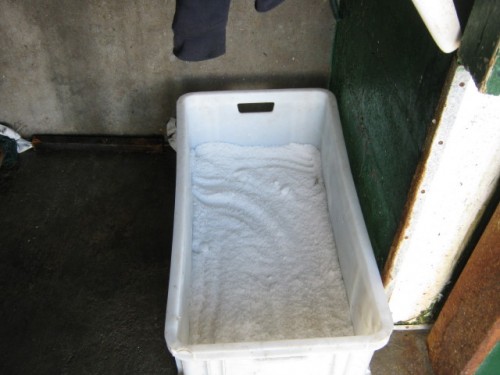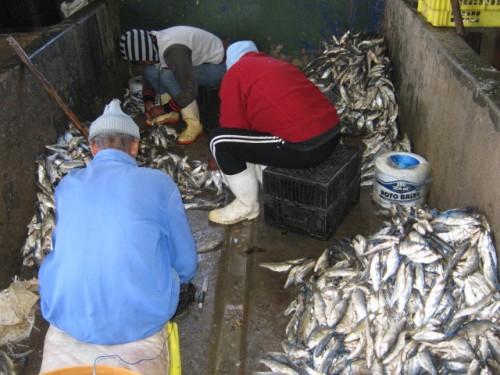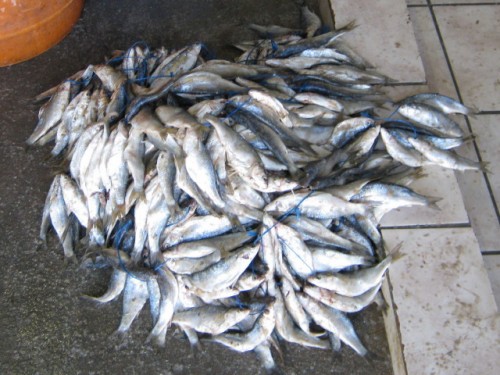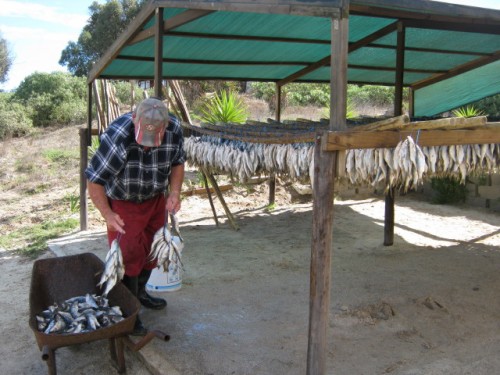On the WEST COAST you are spoiled for choice when it comes to fresh Seafood. In VELDDRIF there are a number of Factories involved in the processing and supply of Fresh, Frozen, Canned and Dried Fish.
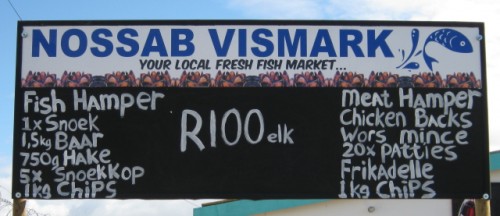
The Fish Market in Kerklaan, Velddrif
VELDDRIF is known as the “bokkom capital” of the world. Around 95% of South Africa’s bokkoms are produced in a series of small individual factories located along the BERG RIVER.
Each factory has its own small jetty on the riverfront. In the past, large schools of MULLET were caught in the river and the jetties used as a place to tie the fishermen’s “bakkies” (small boats) to unload their catch. Today the catching of mullet in the river is prohibited. It must now be netted in the open sea just off LAAIPLEK.
The well-known “Bokkomlaan” (Bokkom avenue) along the banks of the Berg river in Velddrif is a place where tourists can see large numbers of bokkoms strung up in bunches, hanging on reed scaffolds along the side of the road.
The original “WEST COAST” way of preparing bokkoms starts with catching the small Mullets(called “harders” in Afrikaans).
A large square tank built of brick or stone is filled with a strong pickle, made of coarse salt and fresh water, to which the fish is added. Layers of fish and salt continue until all the fish is covered in salt. As soon as enough fish is added to reach the top of the tank, two or three spades full of dry coarse salt is spread on top of the fish.
This is left for one day. On the second day, a press made of weighted wood, is placed on the fish in the tank. The purpose of the press is to compress the air out of the fish to prevent it from going bad.
After the third day in the tank, the fish is taken out and is then strung up with rope in bunches of 10. A fish needle which is pushed through the eyes of the fish is used in this process.
The bunches are then dipped 2 to 3 times in fresh water, before it is hung out to dry.
The best conditions for drying is a lot of wind and defused sunlight. At night the fish is stored under roof to prevent it from drawing in damp, and the next day it is taken out again to hang in the sun. The whole drying process takes about 5 days. Bokkoms are similar to dried herring.
VELDDRIF is the ideal place for the bokkom industry and has access to Mullet just off the coast. With huge amounts of sea salt available, from the spring tide pushing the sea over the extensive salt pans of the CEREBOS Salt Factory and with access to fresh water from the BERG RIVER – It’s dry summers and relatively low rainfall are ideal weather conditions for drying the fish. The bokkom industry originated and is still situated in Velddrif.

